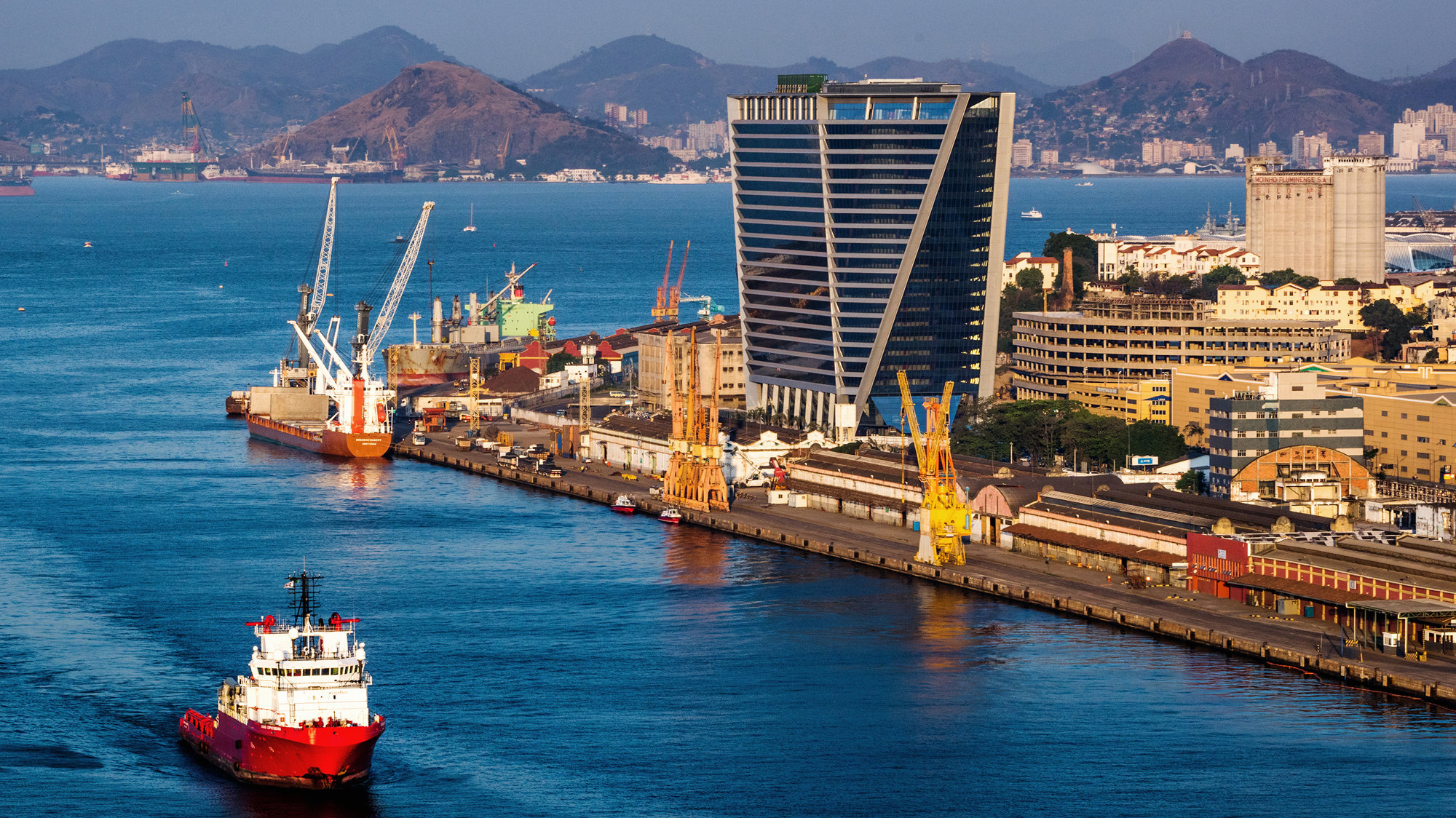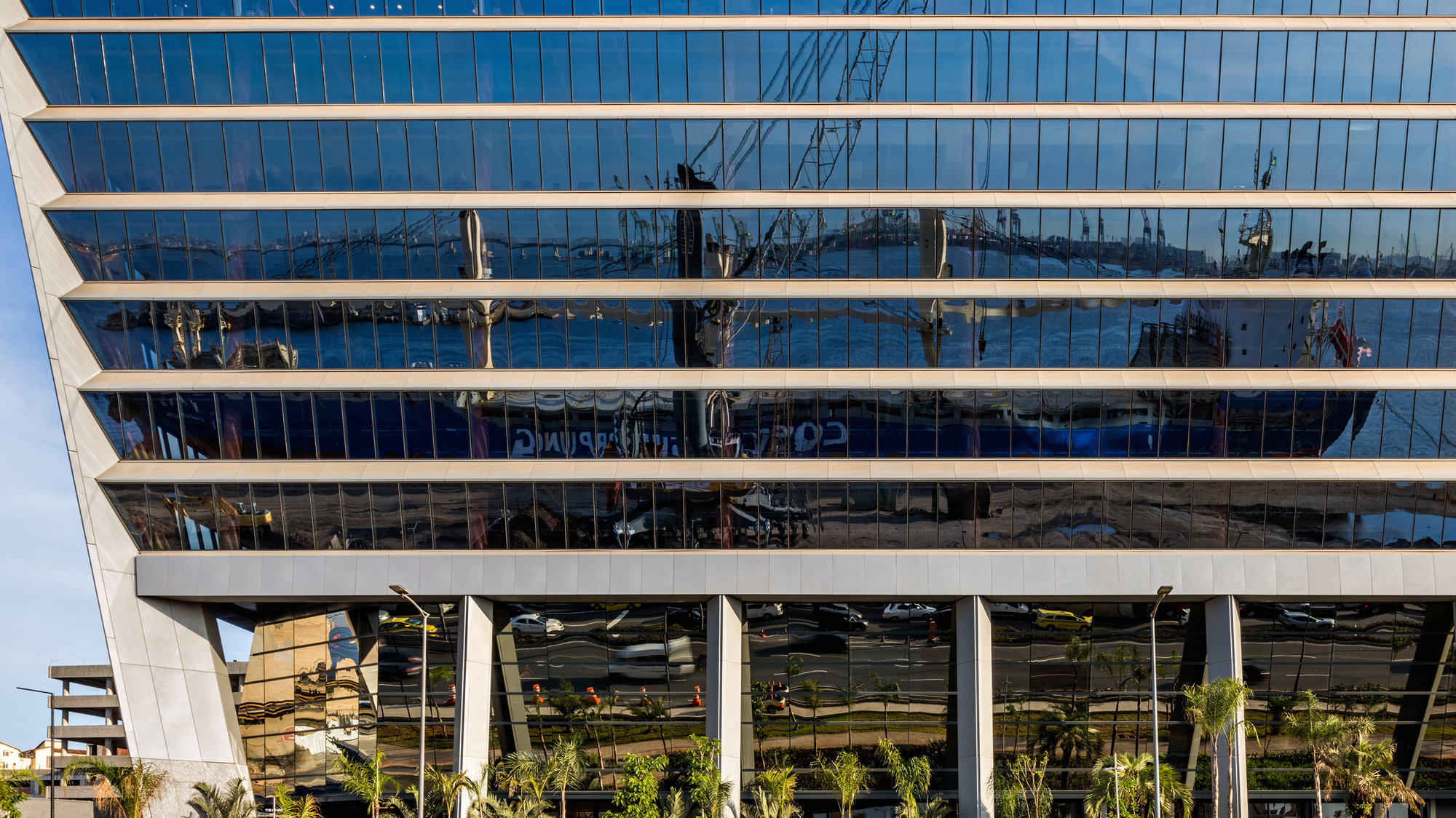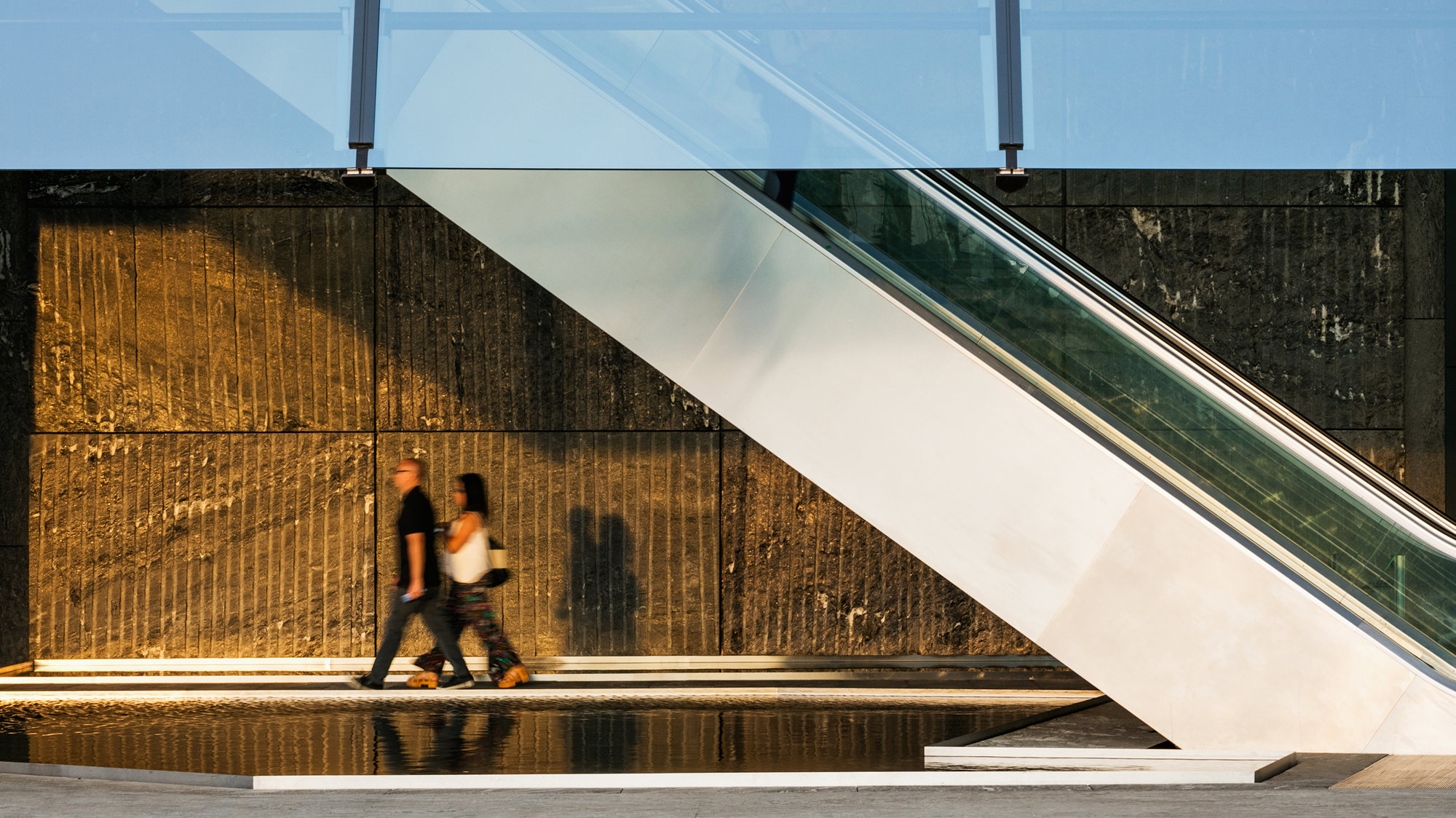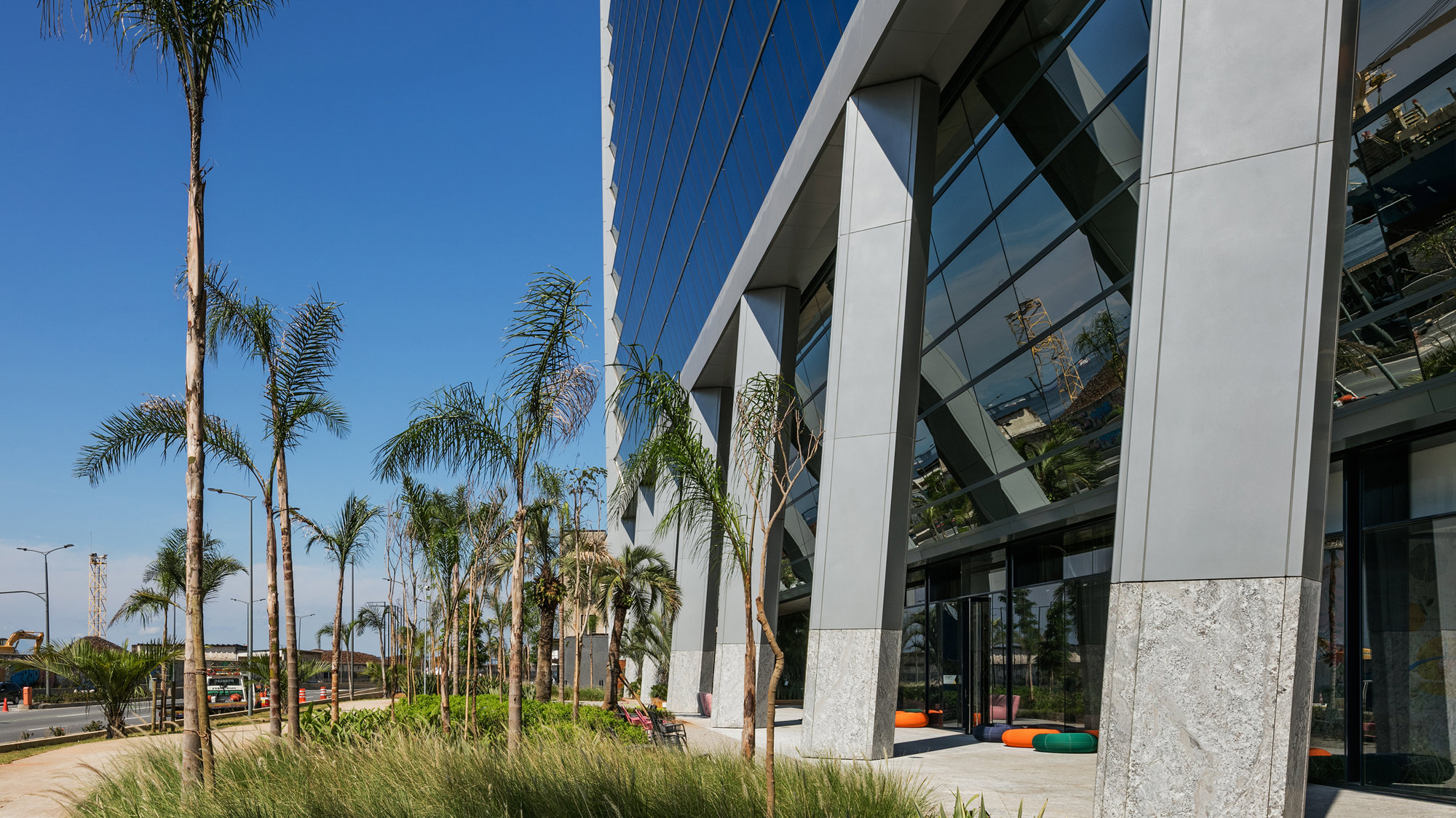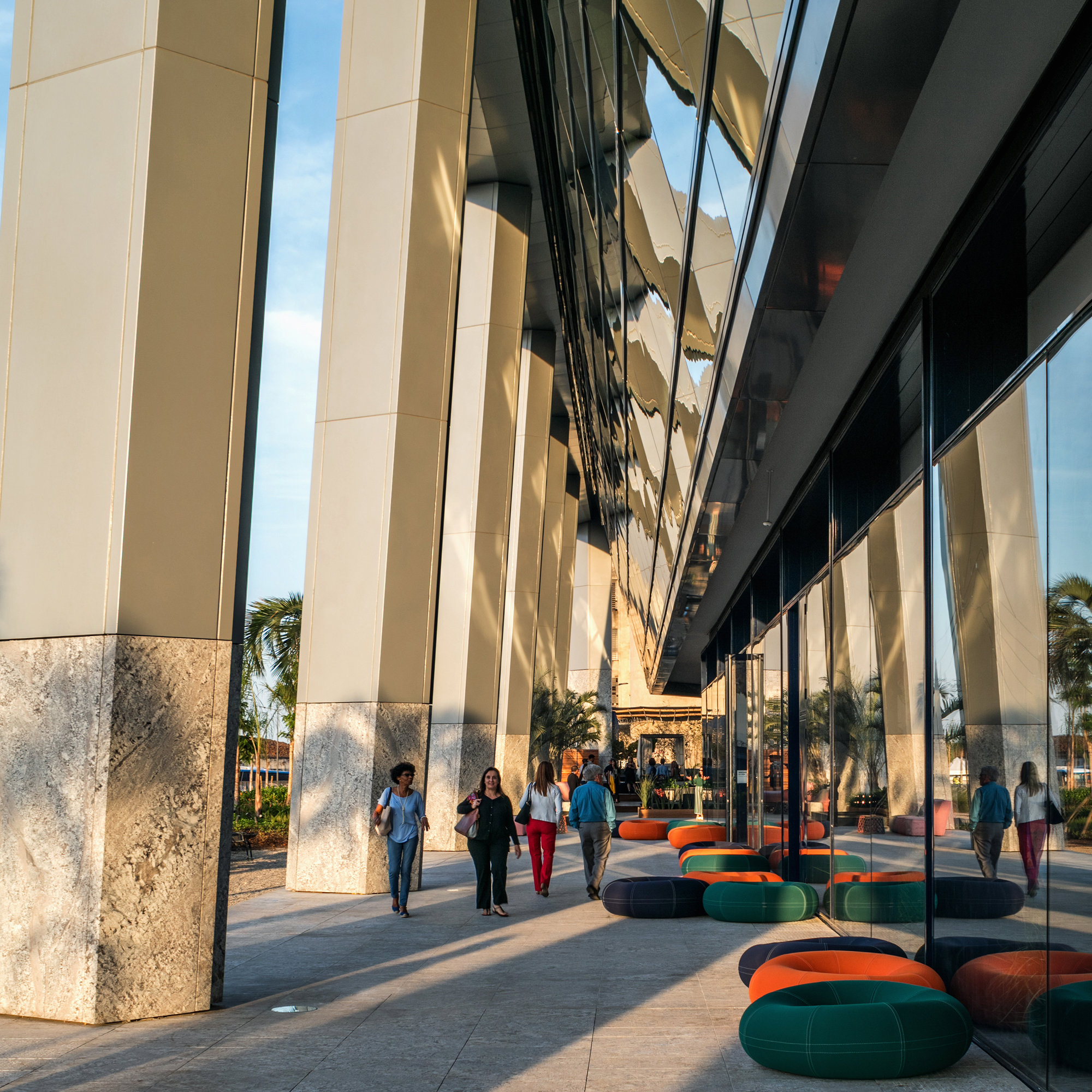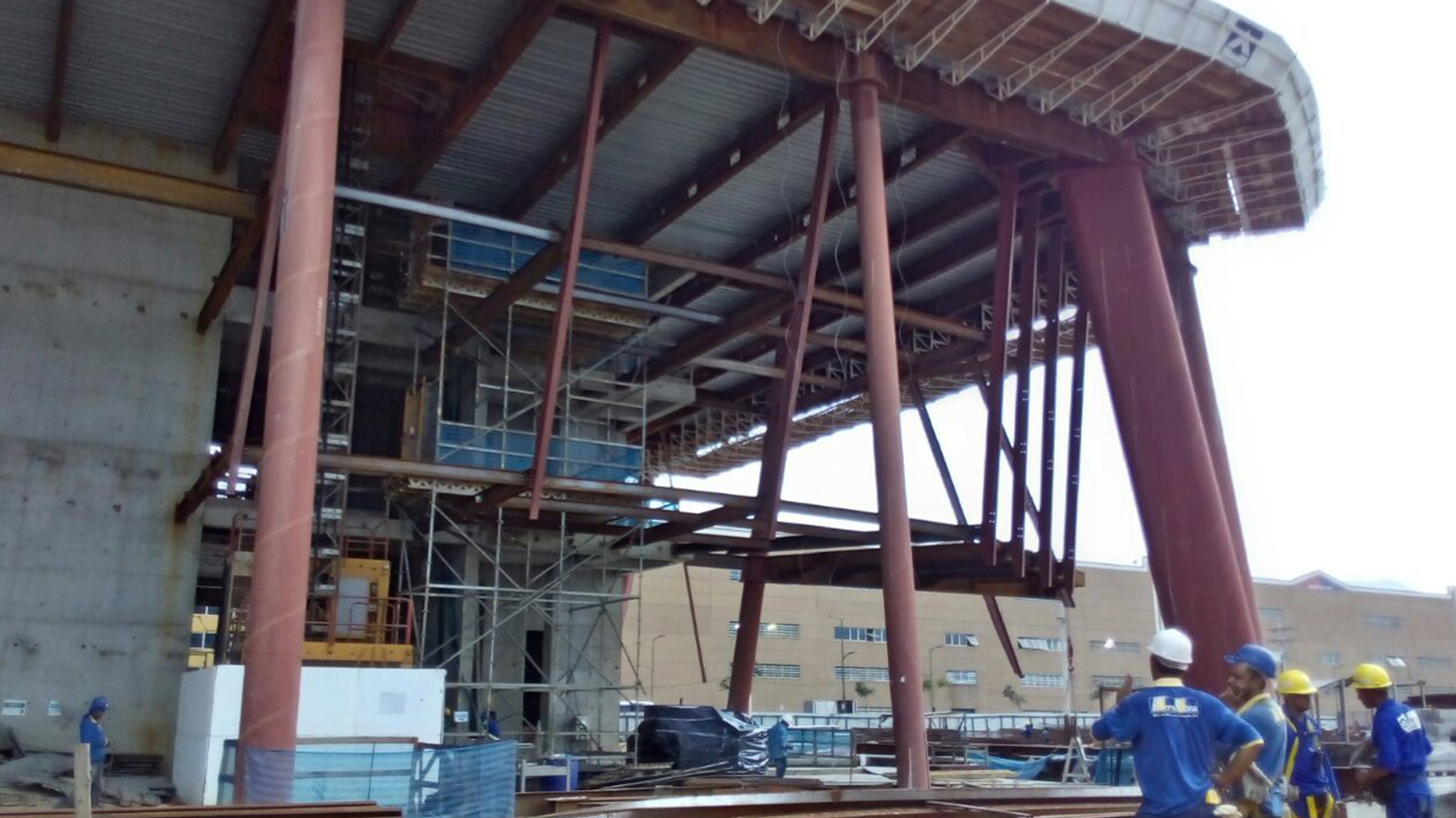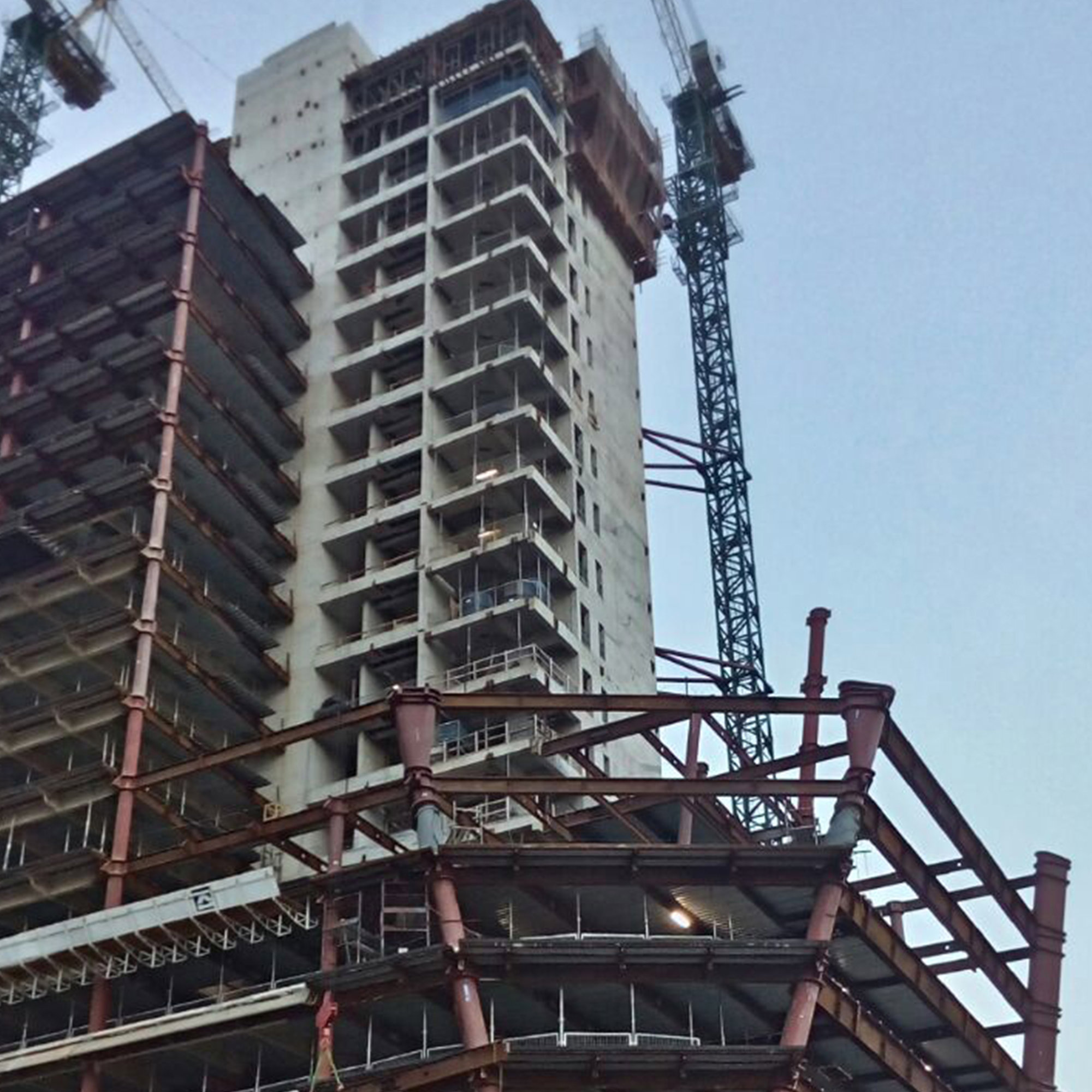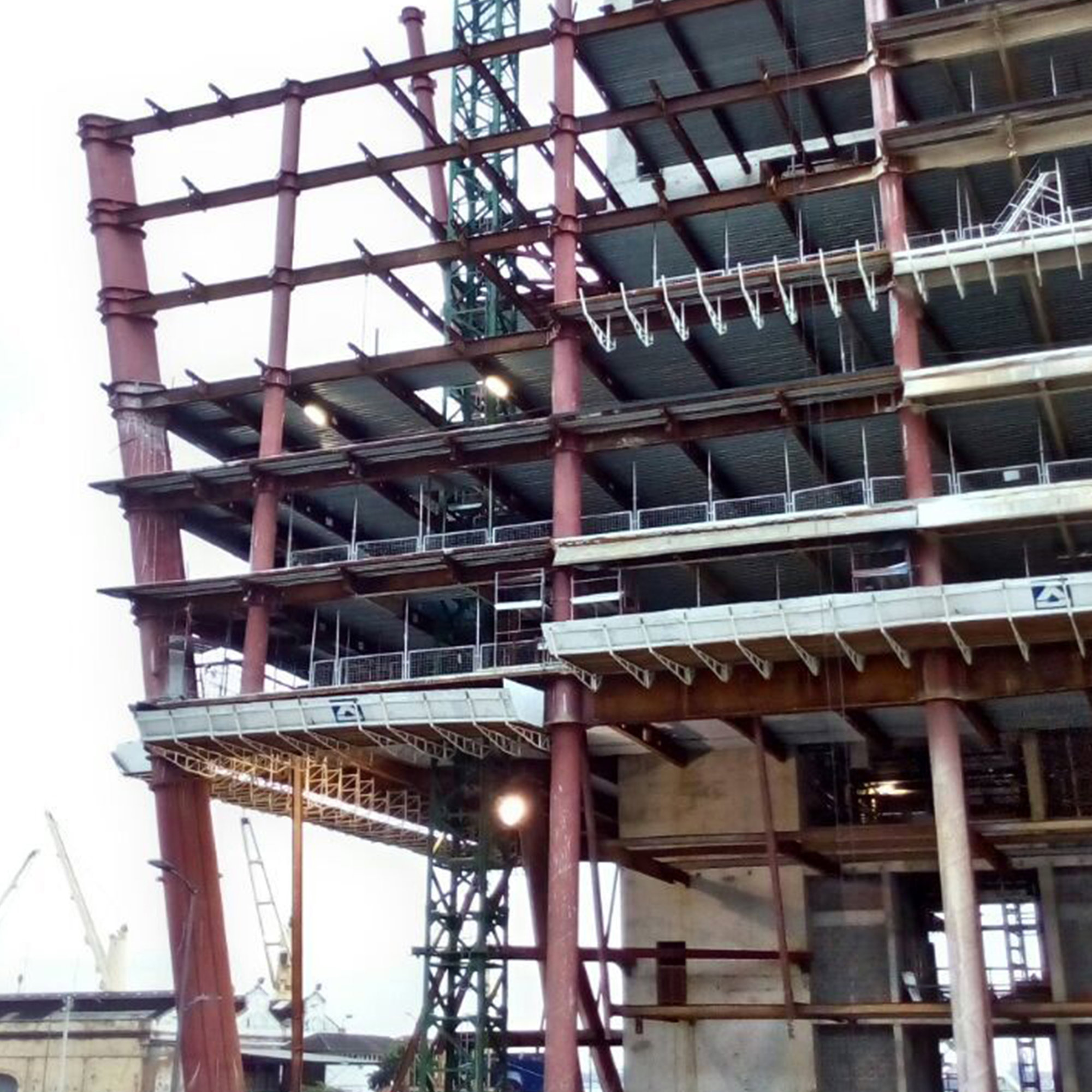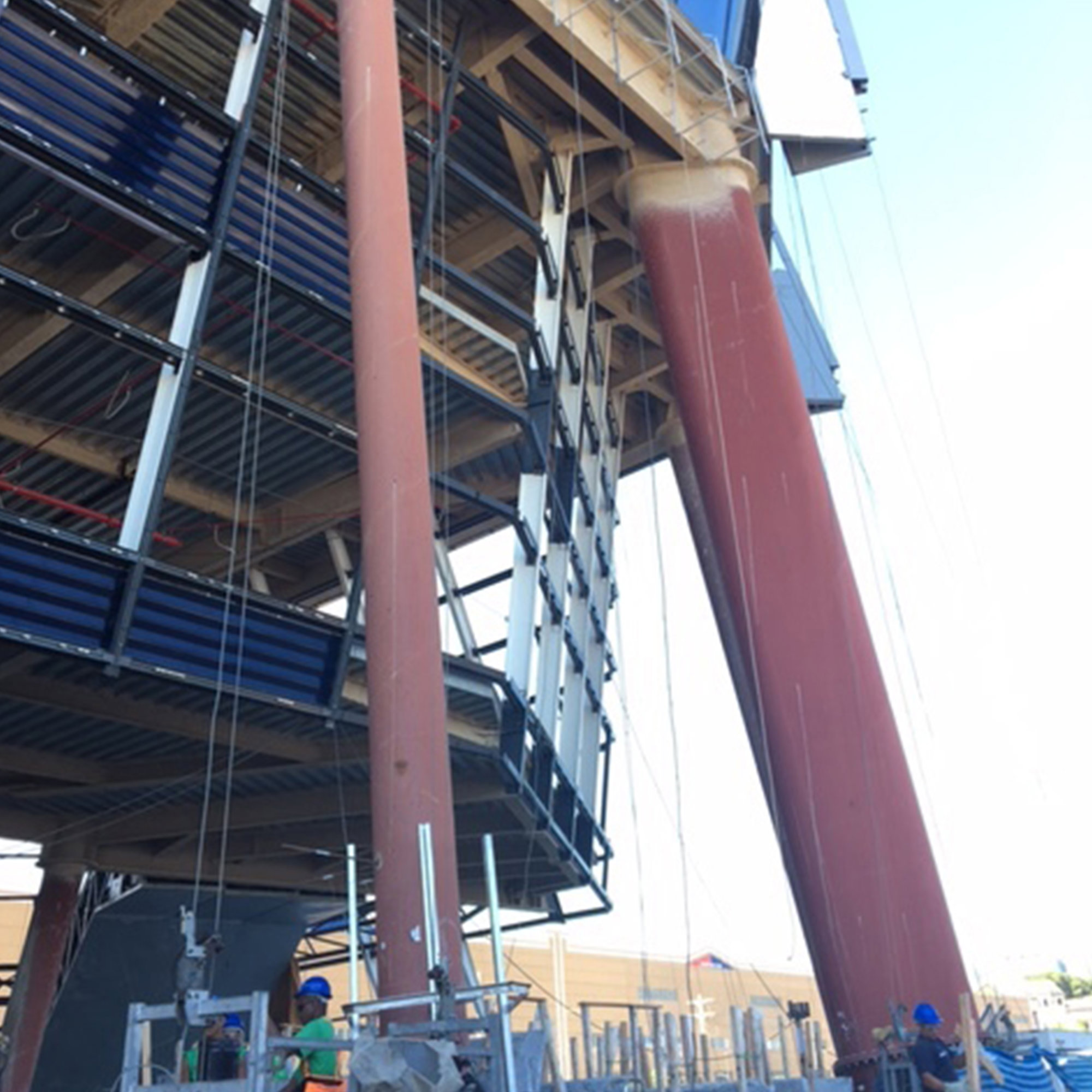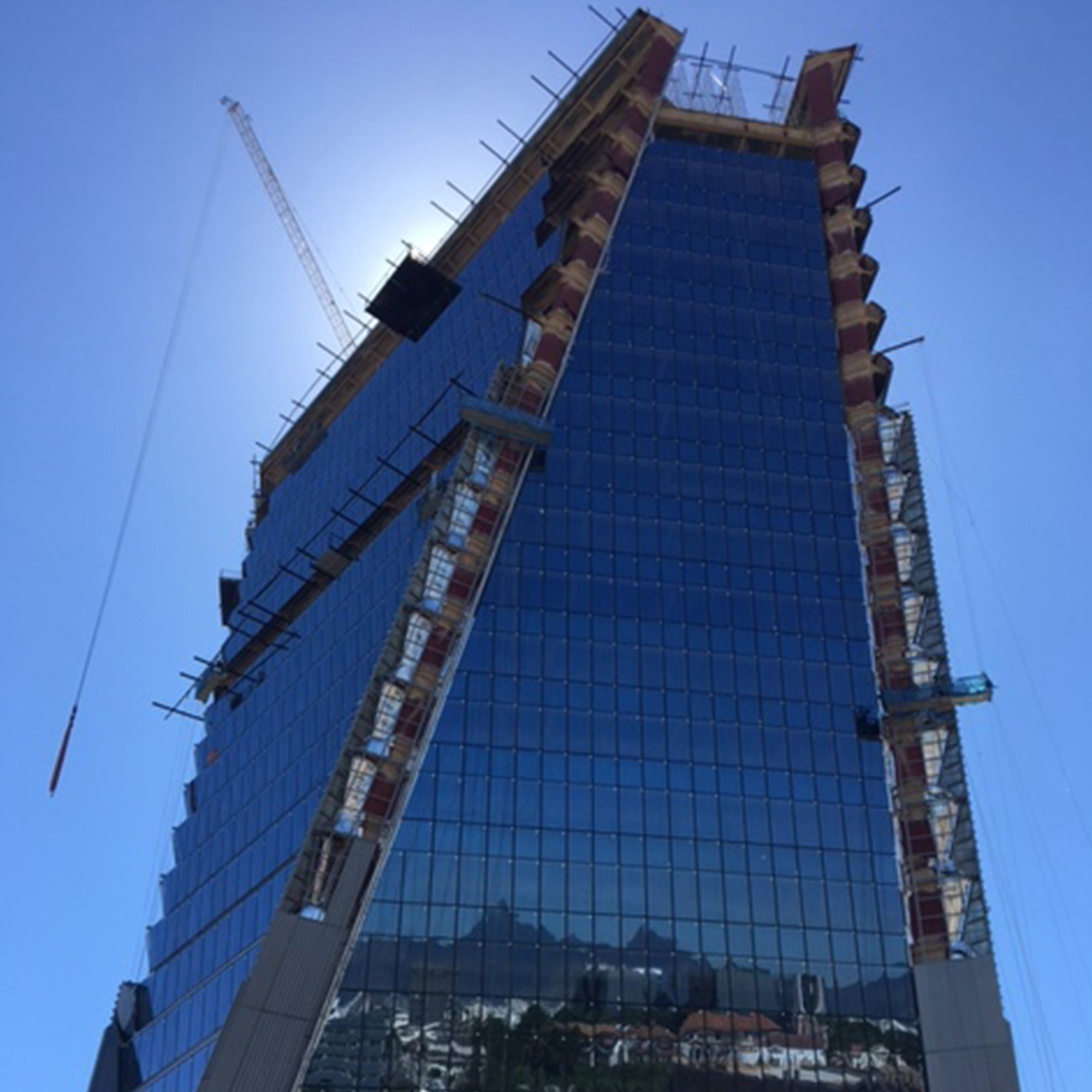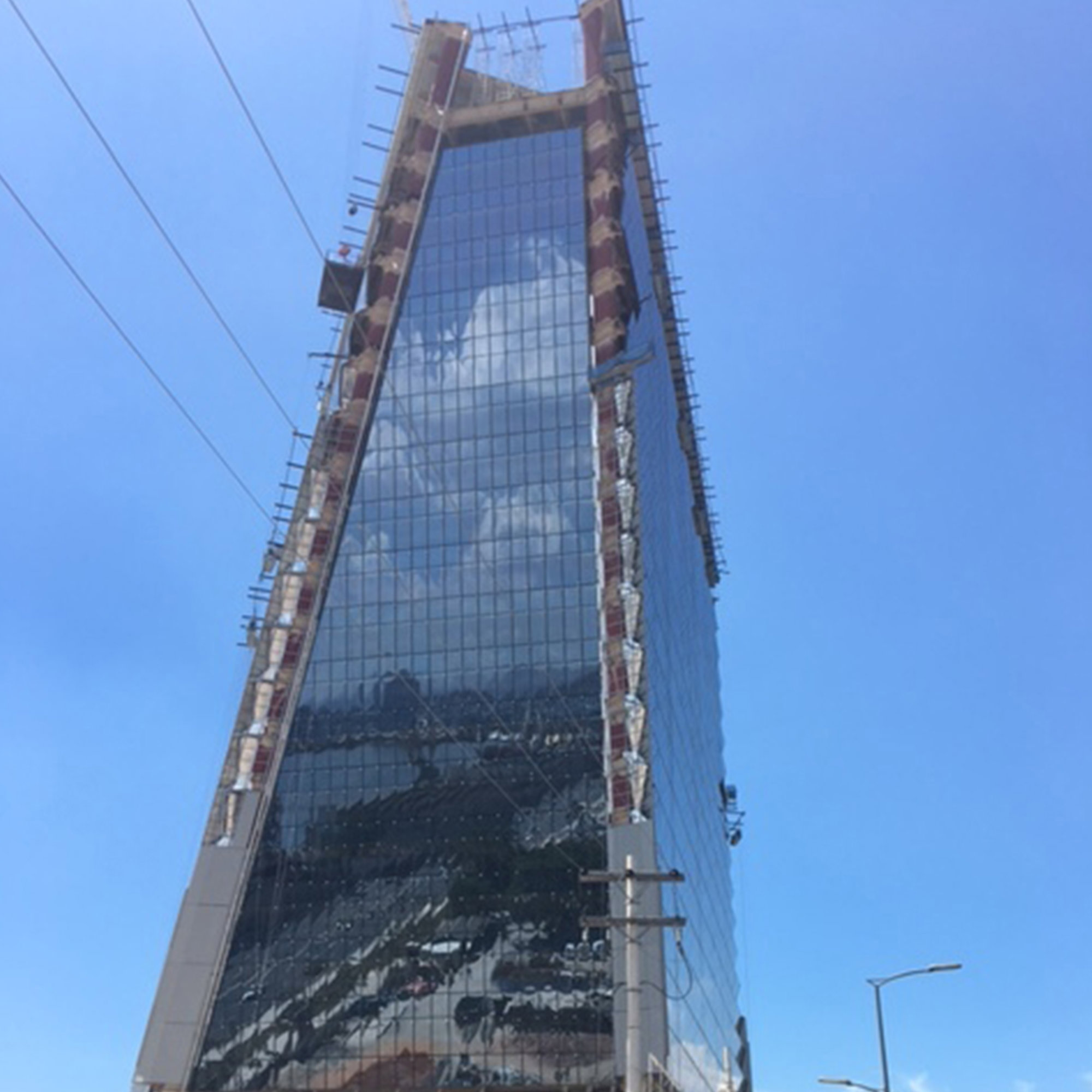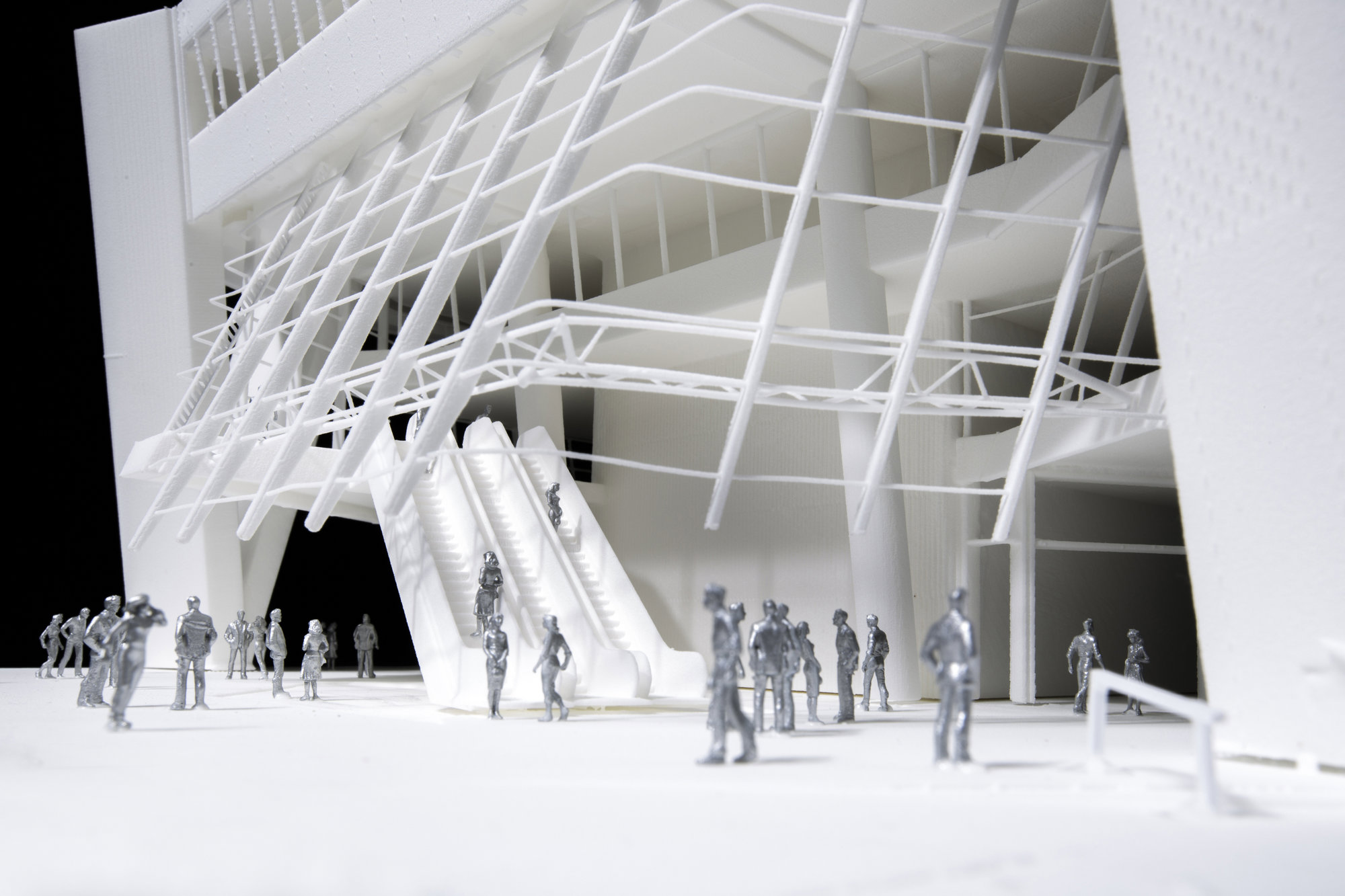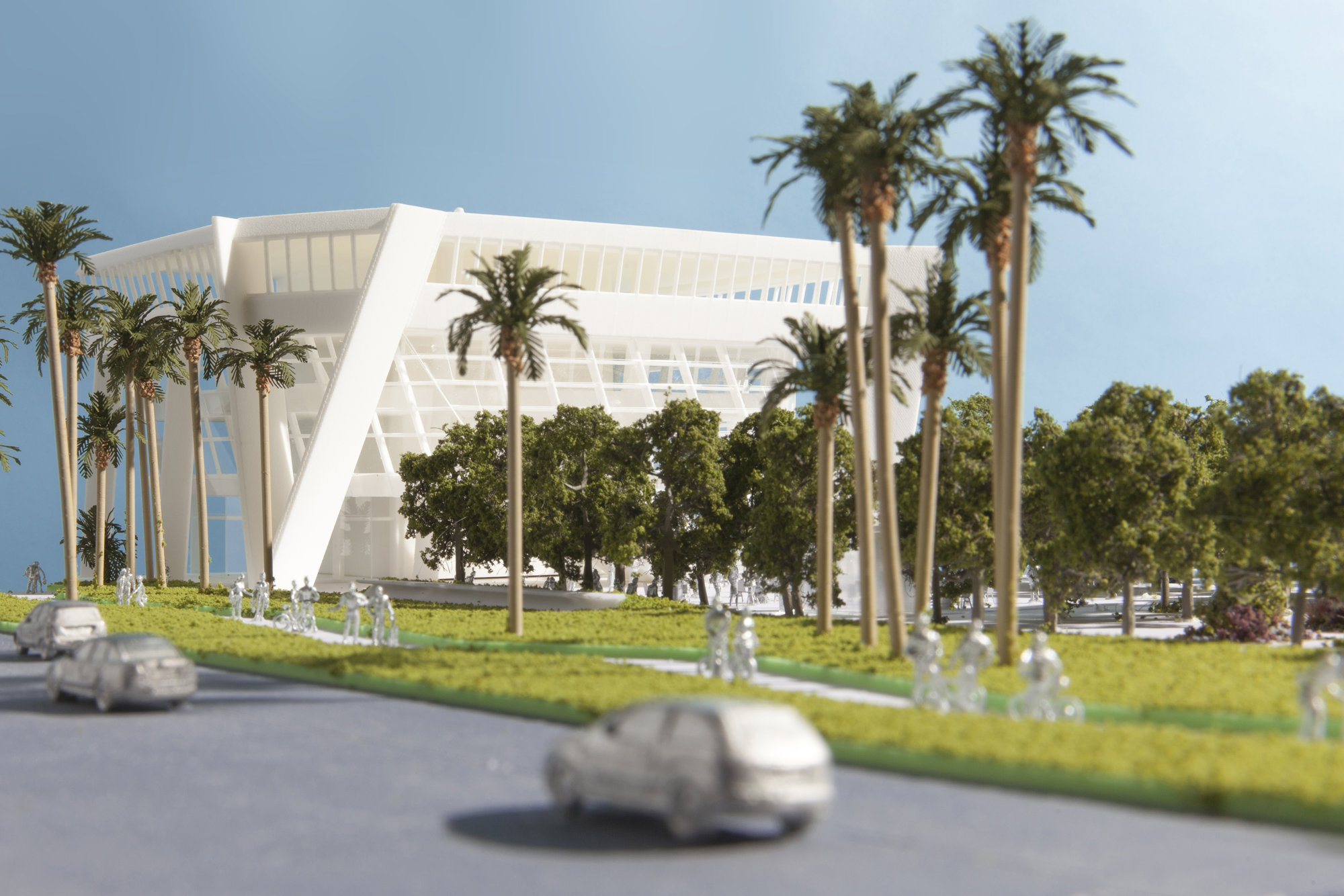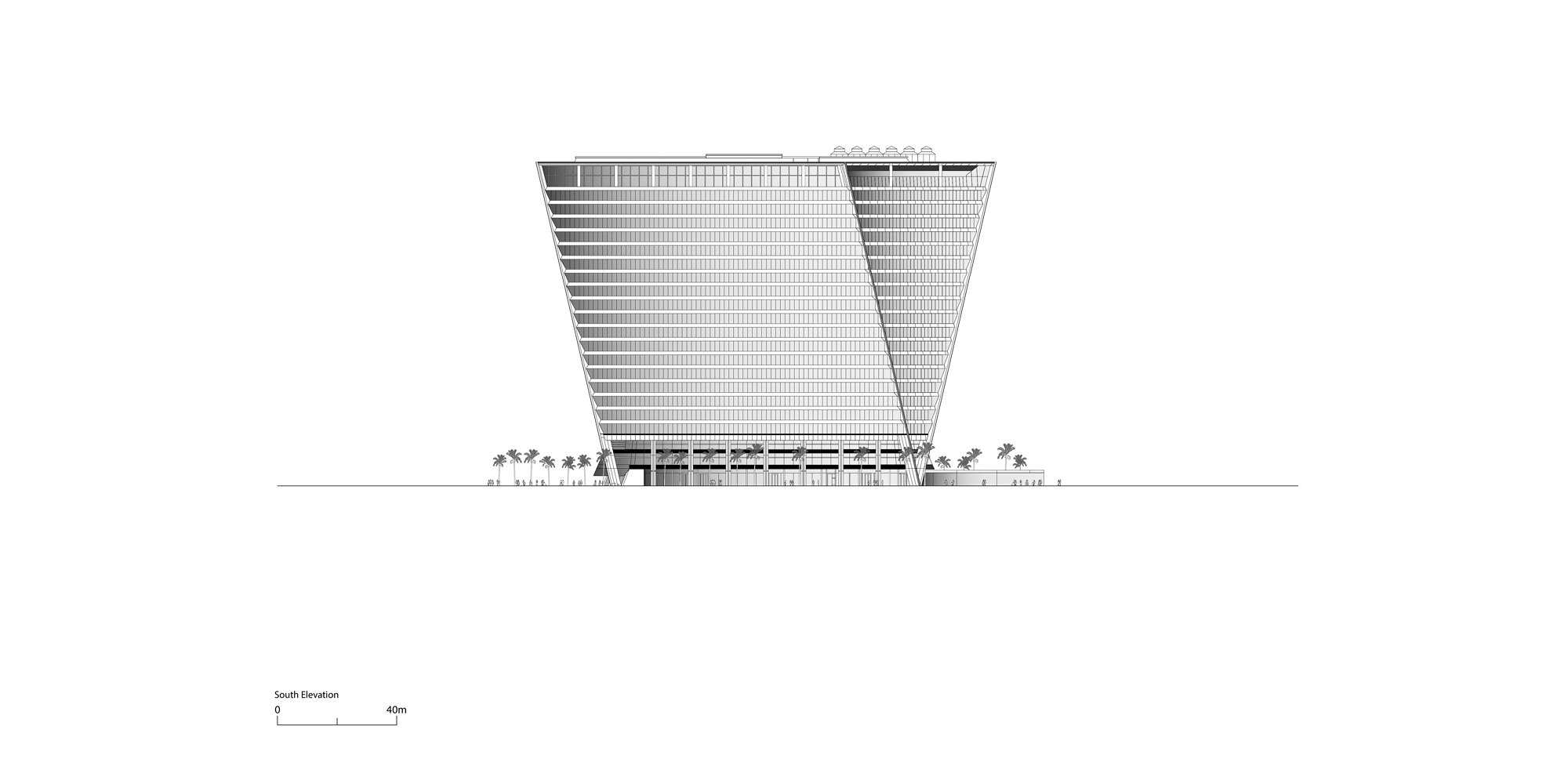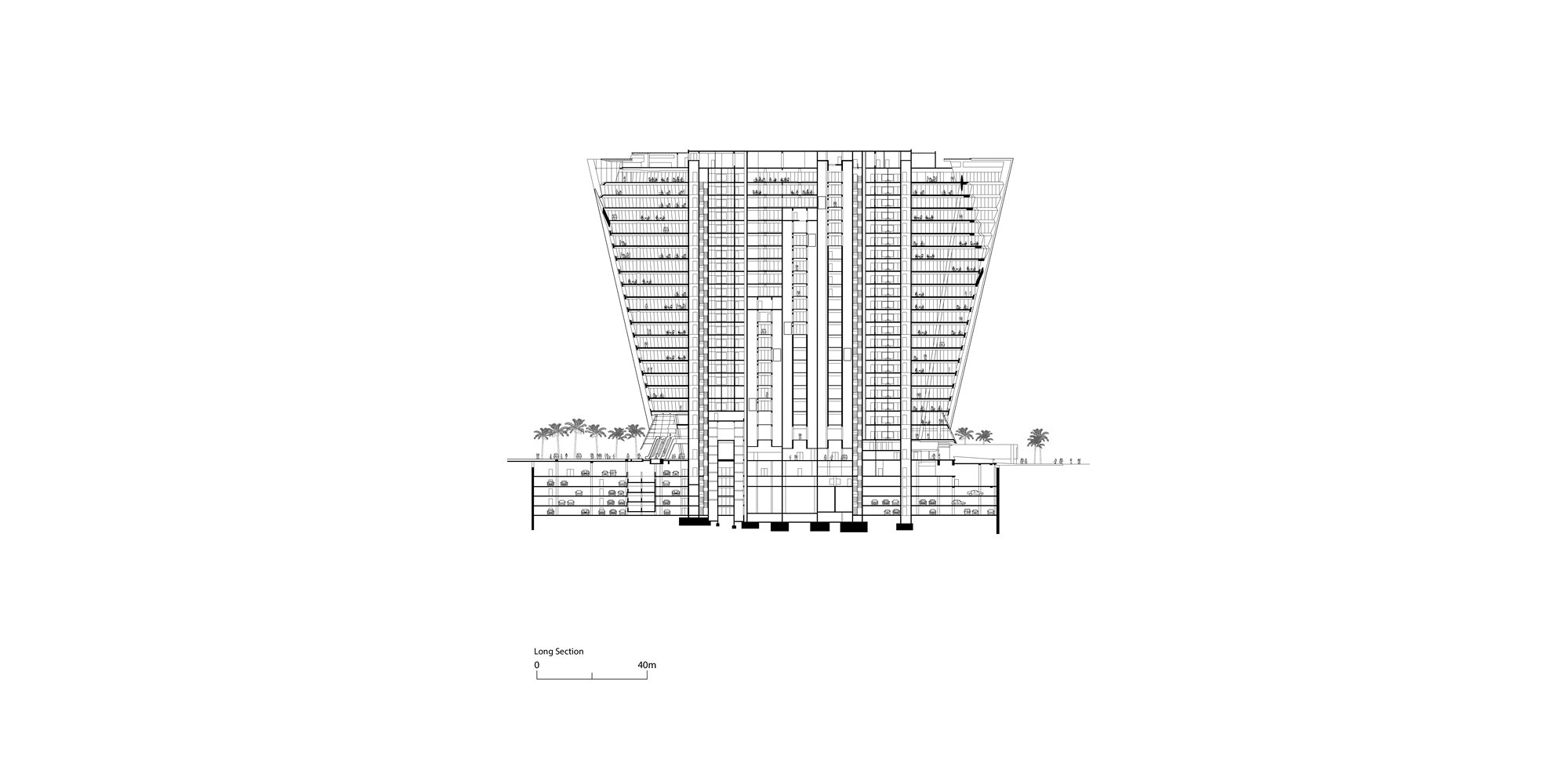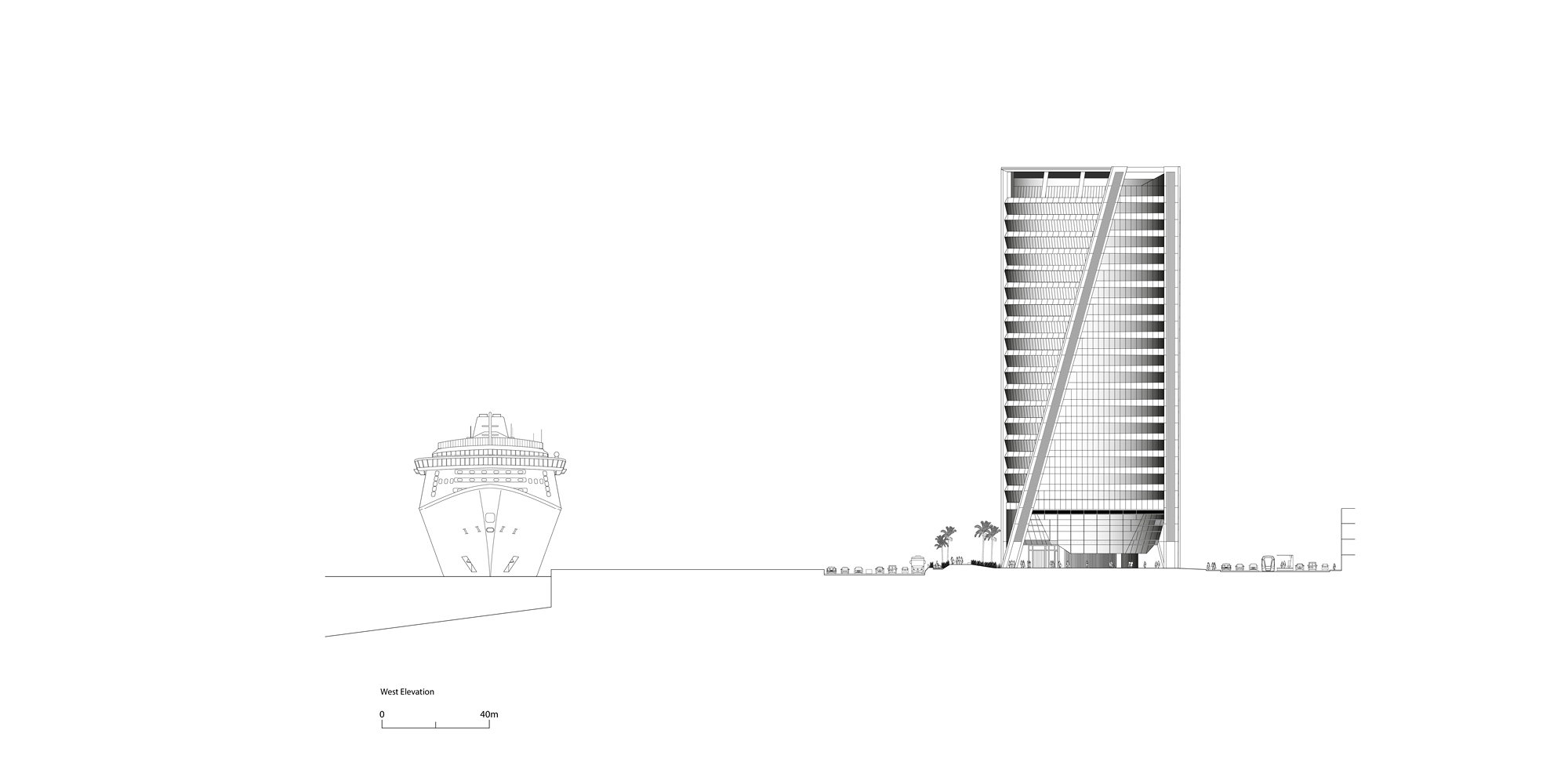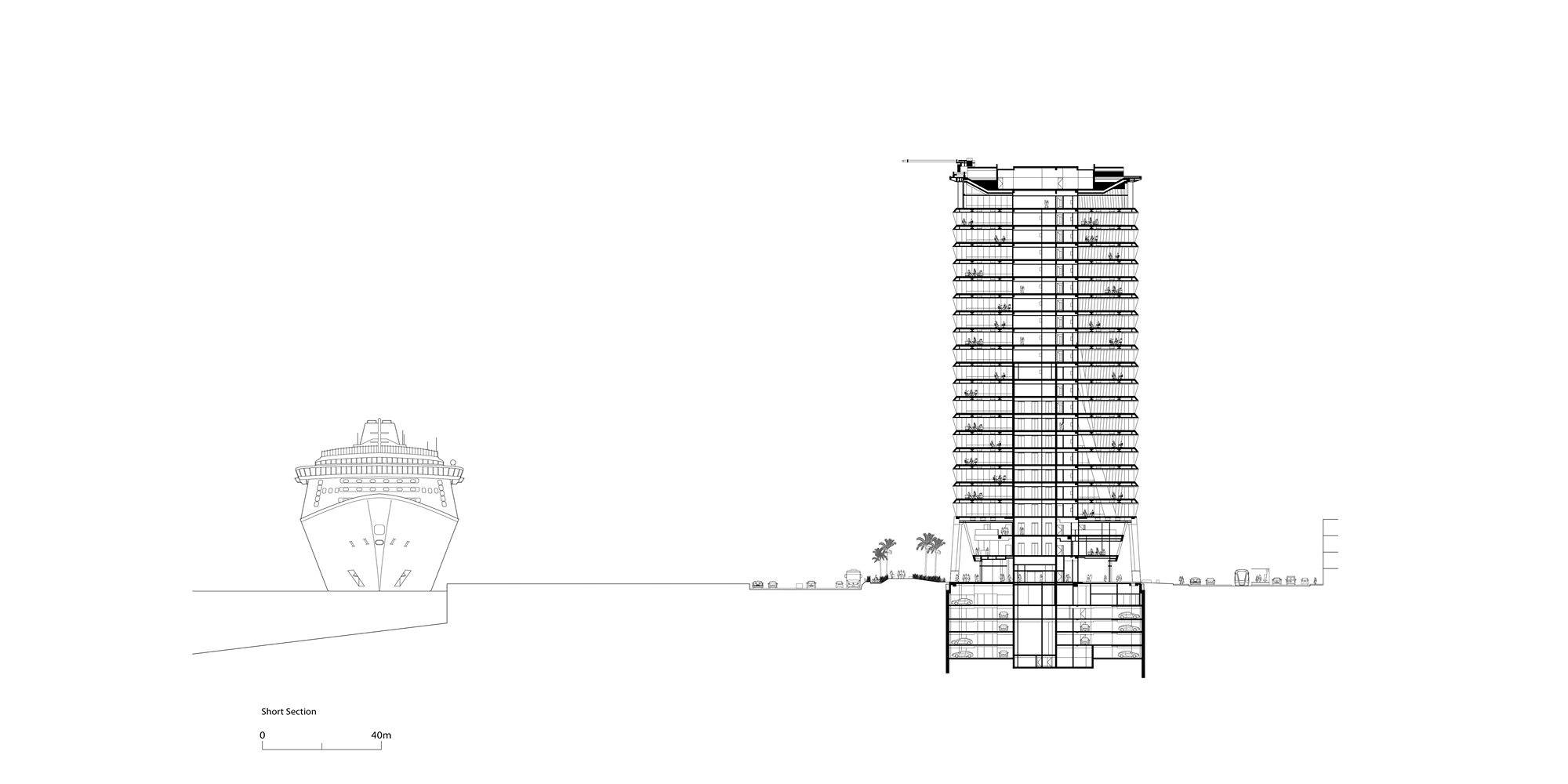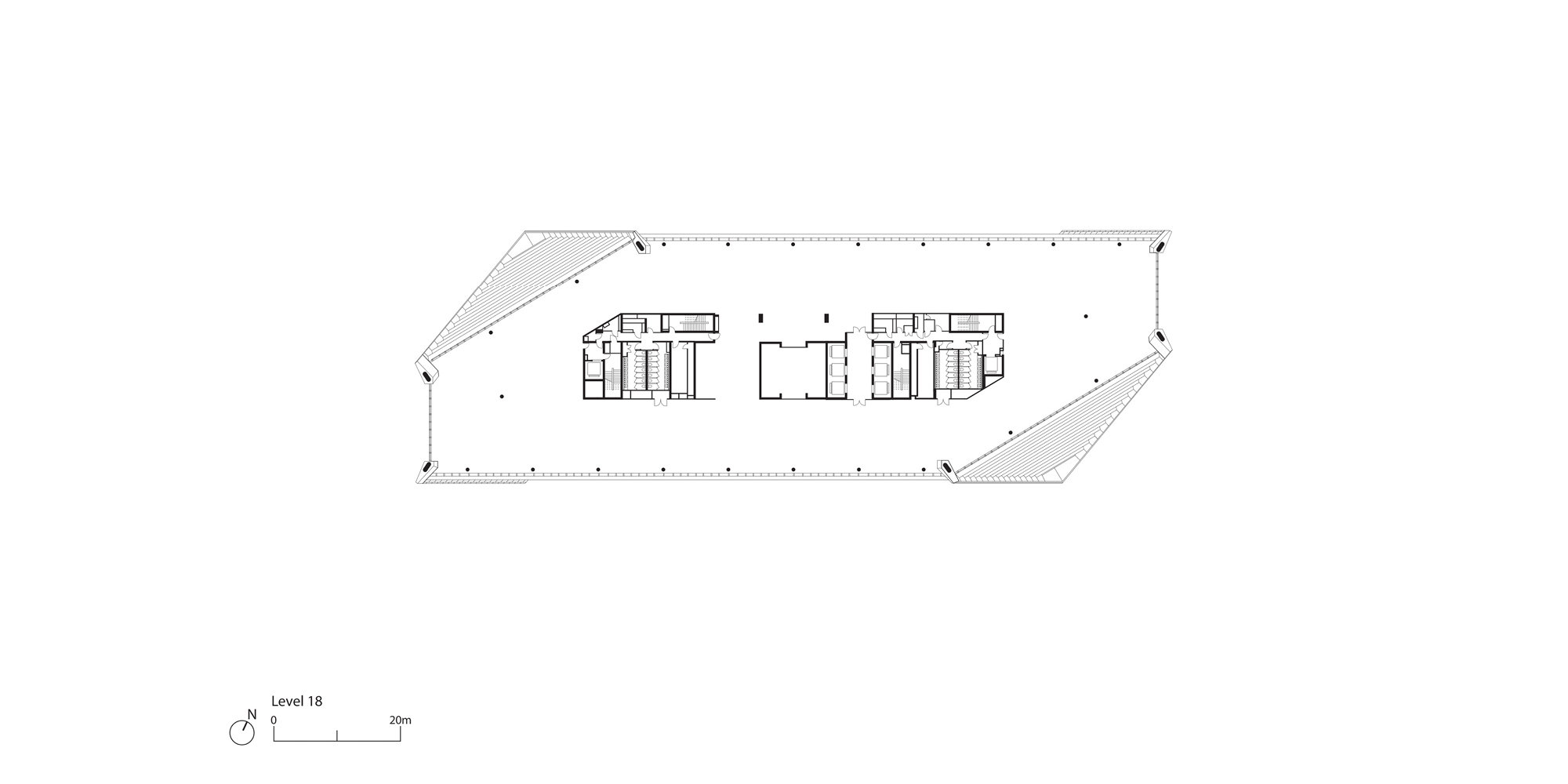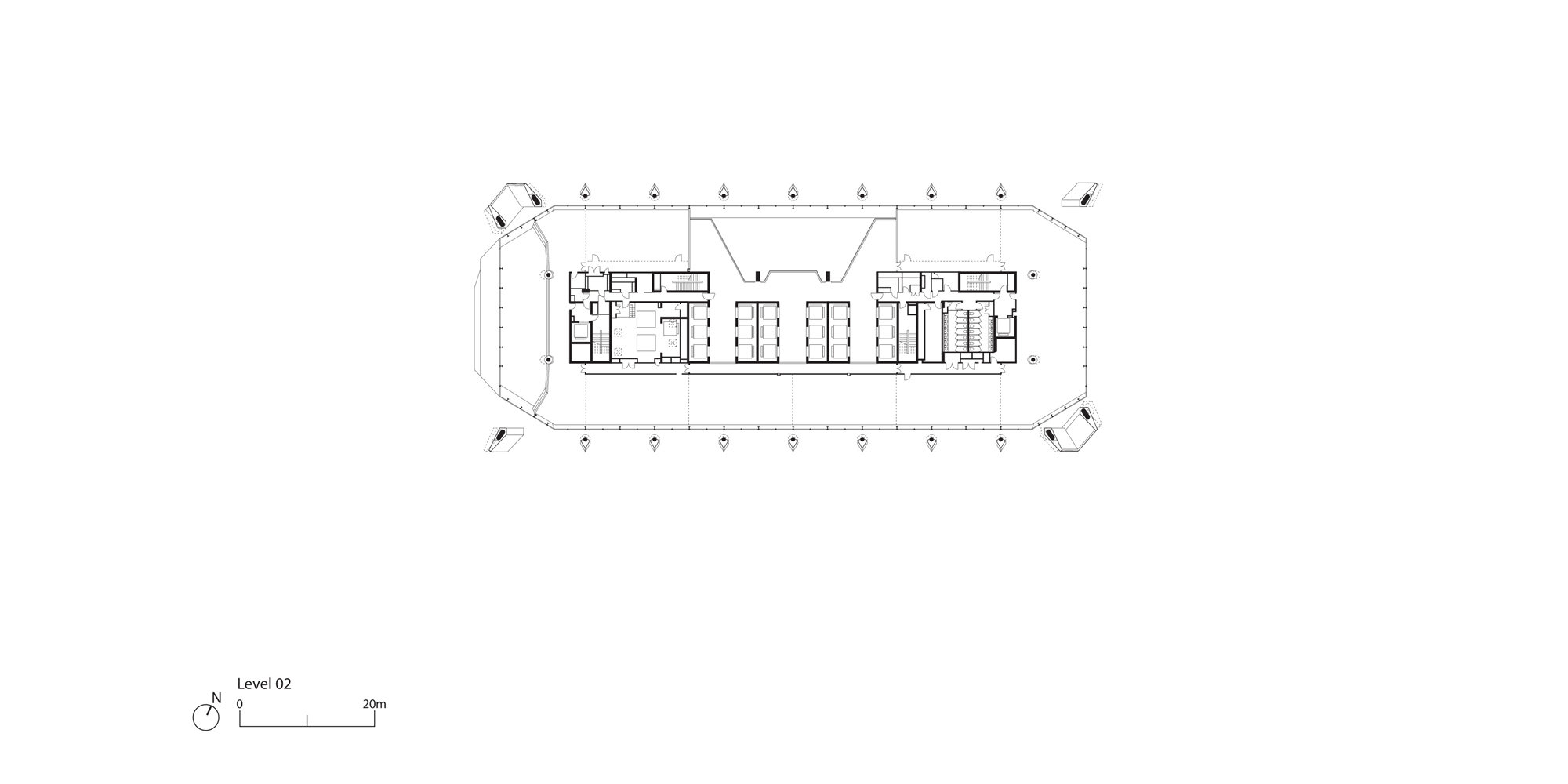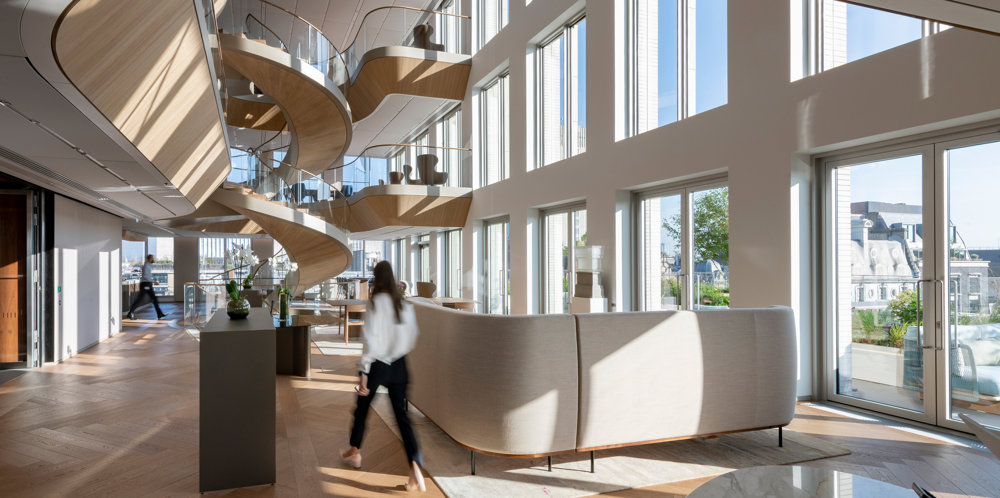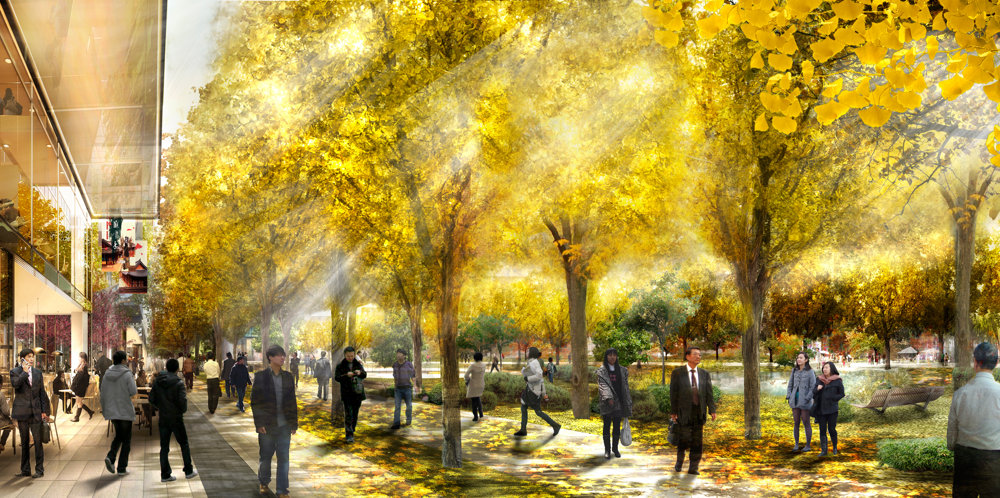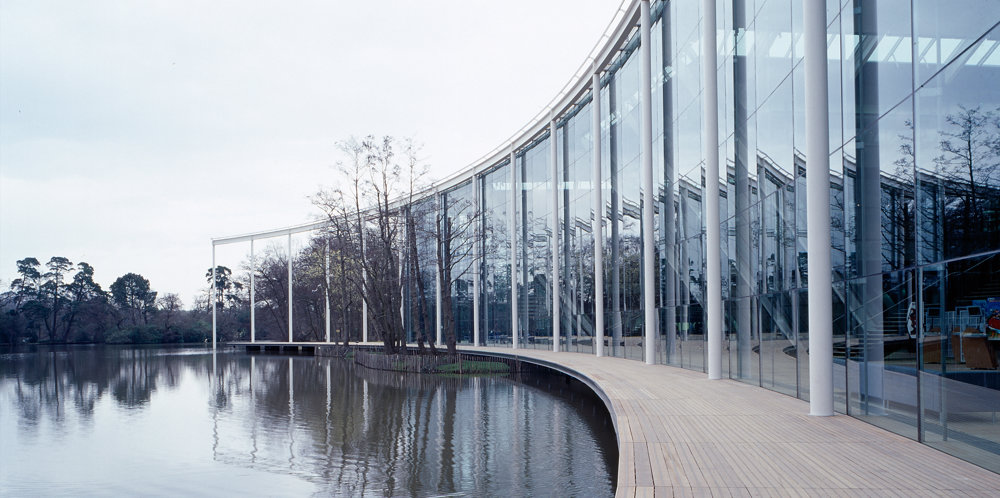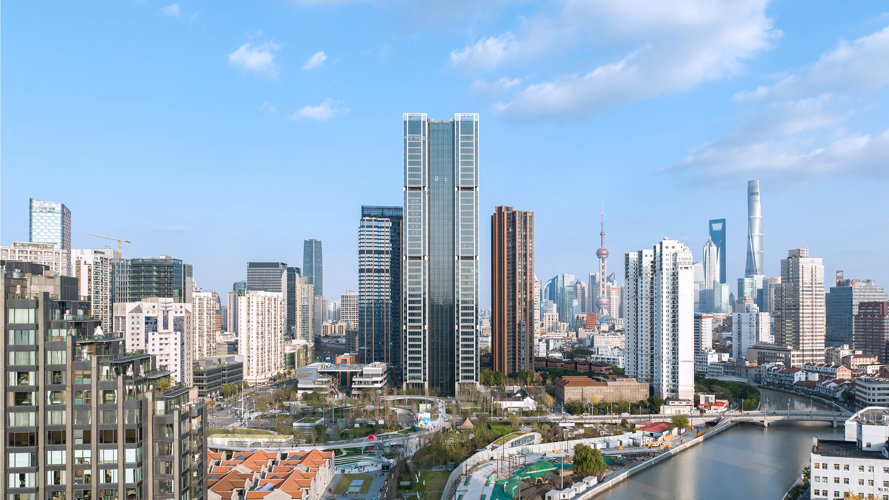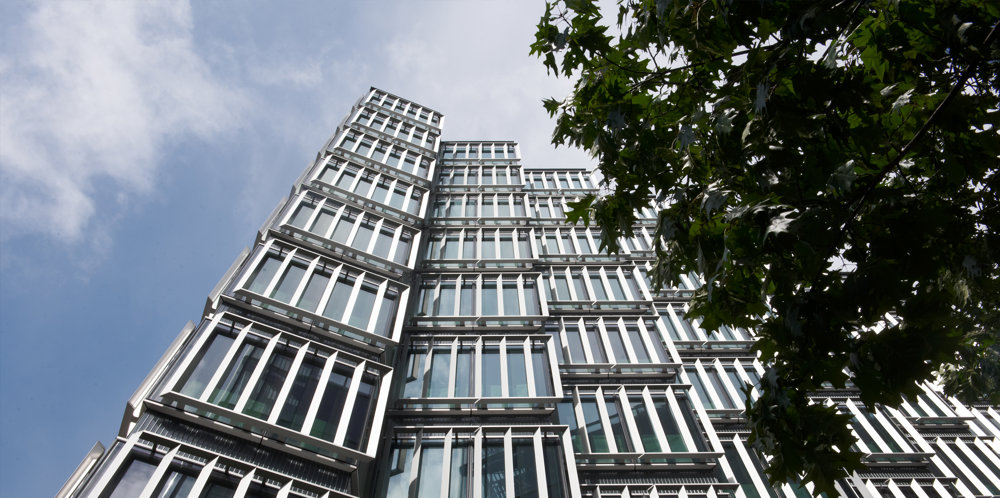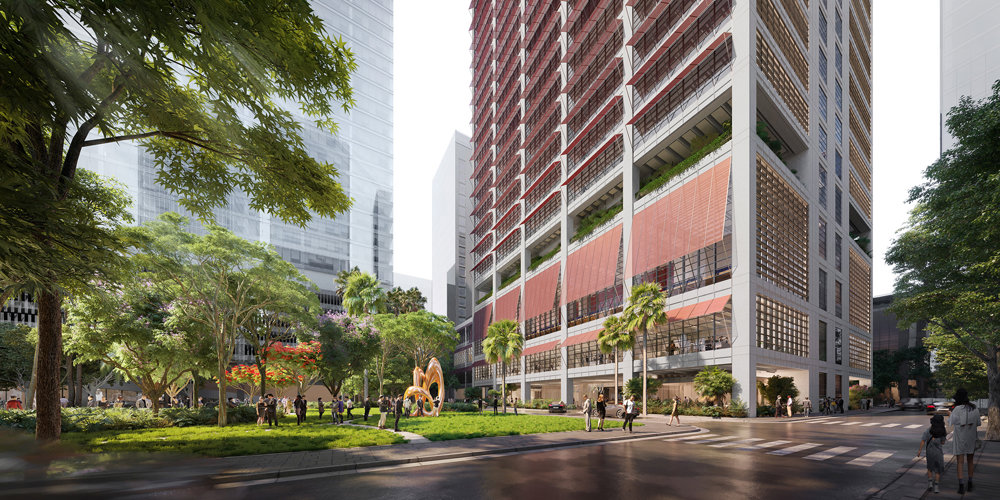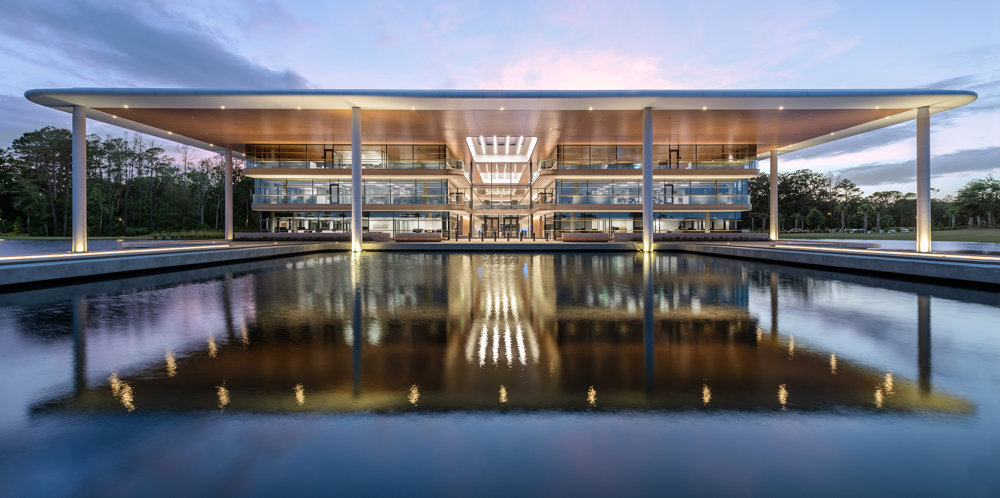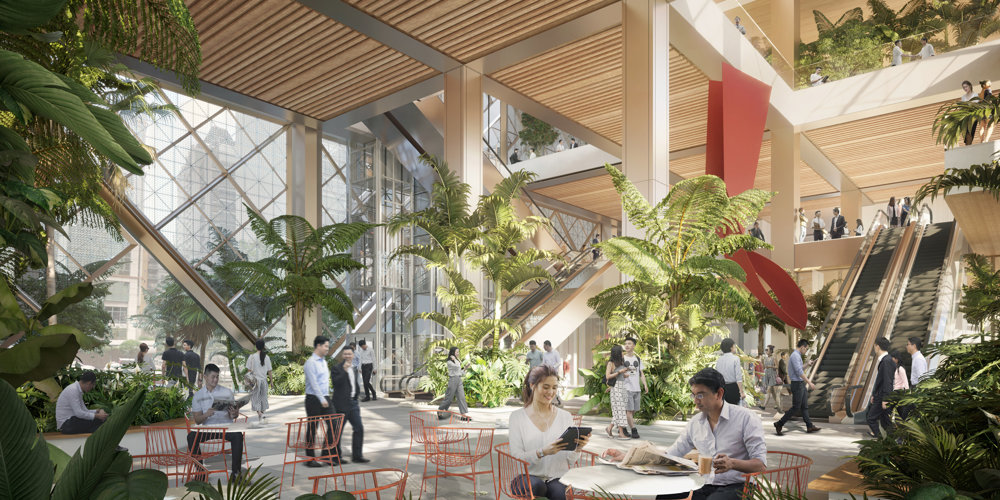The AQWA Corporate project is an office development along the waterfront in Rio de Janeiro, Brazil, strategically located at the heart of the Porto Maravilha urban regeneration district. Situated within a landfill zone dating back to the 20th Century, the project is part of an extensive land reclamation in the historic port area of the city. Throughout its history, the area has been integral to the city’s development, and is where choro and samba music was born. The site is also close to the port region of Rio, which has been isolated for many years by the raised ‘Perimetral highway. The masterplan proposes to demolish part of this route and reintegrate the port – which still receives thousands of visitors every year – with the rest of the area. It will also restore parks, squares and other public spaces throughout the district, while rationalising the traffic flow and introducing new retail, commercial and civic spaces to create a vibrant district in the heart of Rio.
The site is bounded by the newly established Av. Rodrigues Alves urban expressway to the north, and the Avenida Binário to the South, with excellent connections to public transport via a new Light Rail Station to serve the site. At the heart of the project is the grand central plaza – a vibrant pedestrian public realm with a linear retail arcade, recreating the street‐based civic experience of this former light‐industrial port area. A 400-metre long linear park abuts the site, establishing a landscape corridor alongside the sea facing the retail arcade. This includes bike lanes, pedestrian paths and landing zones at different levels to create a visual-sound barrier that shields the site from the expressway while retaining views towards the Guanabara Bay. The 22-storey, twin-building development consists of 125,000 square-metres of office space, with retail and public spaces at the base. The entrance lobby to each building has been lifted above the central public plaza, with views over the adjacent linear park towards the port and Guanabara Bay.
The development has been designed to achieve LEED ASHRAE Gold certification. The project responds to the particular local tropical climate by establishing an enhanced self-shading strategy to the building elevations as well as providing effective sun protection and rain cover in all the principal open-air public circulation and amenity spaces.









